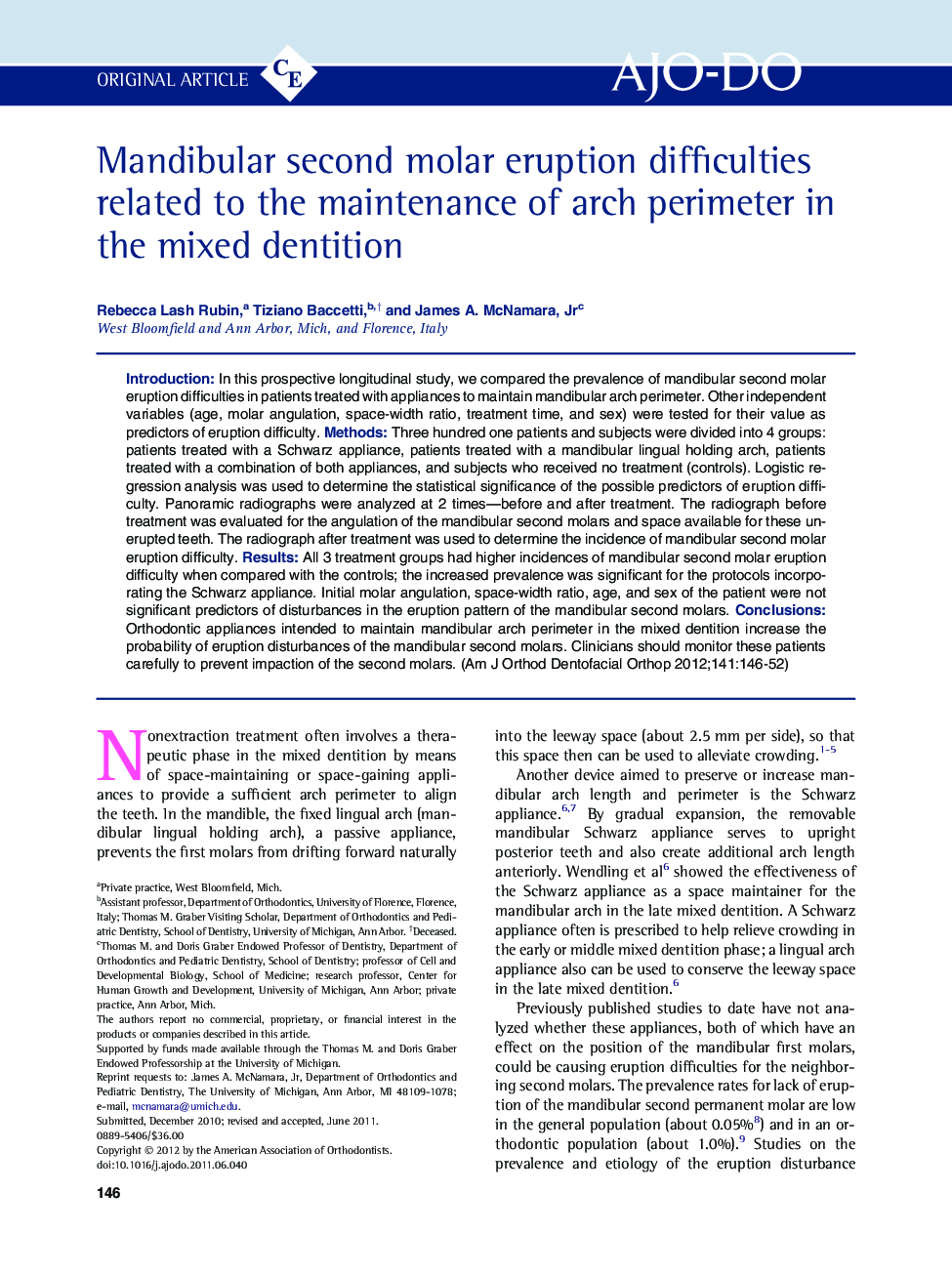| Article ID | Journal | Published Year | Pages | File Type |
|---|---|---|---|---|
| 3117075 | American Journal of Orthodontics and Dentofacial Orthopedics | 2012 | 7 Pages |
IntroductionIn this prospective longitudinal study, we compared the prevalence of mandibular second molar eruption difficulties in patients treated with appliances to maintain mandibular arch perimeter. Other independent variables (age, molar angulation, space-width ratio, treatment time, and sex) were tested for their value as predictors of eruption difficulty.MethodsThree hundred one patients and subjects were divided into 4 groups: patients treated with a Schwarz appliance, patients treated with a mandibular lingual holding arch, patients treated with a combination of both appliances, and subjects who received no treatment (controls). Logistic regression analysis was used to determine the statistical significance of the possible predictors of eruption difficulty. Panoramic radiographs were analyzed at 2 times—before and after treatment. The radiograph before treatment was evaluated for the angulation of the mandibular second molars and space available for these unerupted teeth. The radiograph after treatment was used to determine the incidence of mandibular second molar eruption difficulty.ResultsAll 3 treatment groups had higher incidences of mandibular second molar eruption difficulty when compared with the controls; the increased prevalence was significant for the protocols incorporating the Schwarz appliance. Initial molar angulation, space-width ratio, age, and sex of the patient were not significant predictors of disturbances in the eruption pattern of the mandibular second molars.ConclusionsOrthodontic appliances intended to maintain mandibular arch perimeter in the mixed dentition increase the probability of eruption disturbances of the mandibular second molars. Clinicians should monitor these patients carefully to prevent impaction of the second molars.
